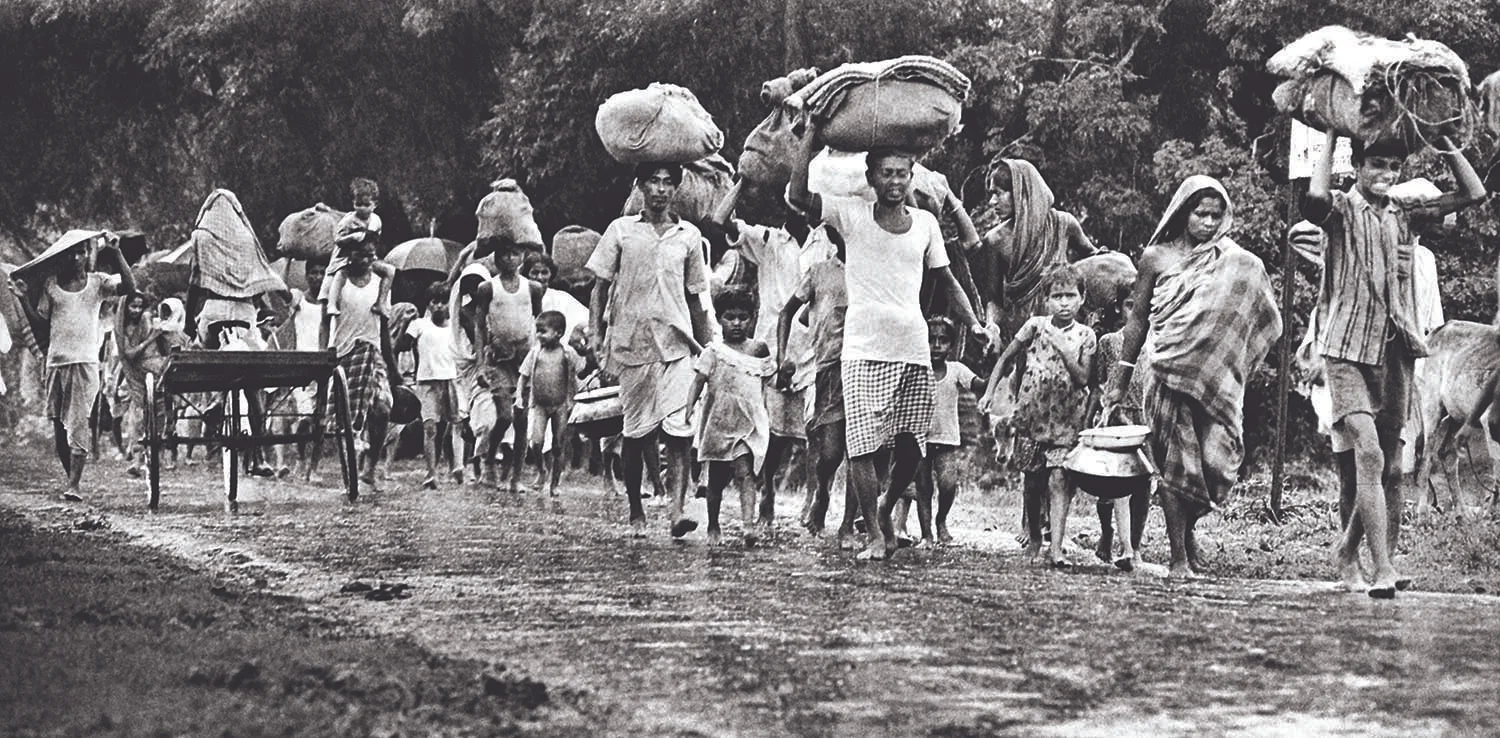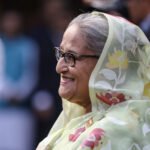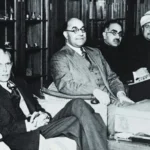Based on the thread initiated by Dr. Hassaan Bokhari (@shbokhari13), we are presenting the subject matter in its more expansive format. Enjoy reading
Barely a year after the birth of Pakistan, the issue of inter-wing disparity became a popular talking point among opposition politicians in East Pakistan. It was a bit comical to see Hindu politicians like Dhirendranath Dutta cry hoarse over inter-wing disparity when scarcely a whisper was heard from them in the past decades when East Bengal was drained by West Bengal and treated as a hinterland for the industrial hub of Calcutta.
The issue of disparity encompasses three major aspects. Among these are the disparity in the government jobs/administrative and superior services; the disparity in the armed forces; and the disparity in the economy/industrial development.
First, let us talk about the disparity in government jobs and superior services. In 1947, Pakistan inherited 83 CSPs, and only one of them was Bengali. The standard of education among Bengali Muslims was one of the lowest in South Asia in 1947 (as a result of the Hindu/British tyranny spanning 190 years). In 1947, Bengalis held less than 1% of all government jobs in Pakistan. This situation was tackled by improving education opportunities for East Pakistani youth and by allocating a hefty quota for Bengalis’ superior services and government jobs.
Due to these efforts, by 1969, the share of East Pakistanis in government jobs had jumped from less than 1% to 36%. Their share of the superior services increased from 1.2% to 41%.
Regarding the armed forces, East Pakistan was in an even more pitiful situation in 1947. Bengalis had been classified as a “non-martial race” by the British. As a result, in 1947, only 1% of Pakistani Army personnel were from East Pakistan. The lack of an armed forces culture in East Pakistani society, coupled with a reluctance to serve outside their province, led to very few Bengalis applying for recruitment into the army and the ISSB. Ayub Khan, on becoming the army chief, made a lot of efforts to increase the share of Bengalis in the Pakistan armed forces. Many in Pakistan are familiar with the prestigious institution of Cadet College Hasanabdal, which is commonly described as the first cadet college in Pakistan. That is not so, because the first cadet college was established in Dhaka through the efforts of Ayub Khan in 1952. Due to a lack of applicants, the institution had to be closed a year later, as only 15 candidates applied. On the other hand, when Cadet College Hasanabdal was established in 1954 in Punjab’s Attock district, it very quickly became an elite school where thousands of applications for admission from all over West Pakistan were received for a few dozen slots.
Some Bengali politicians (including Sheikh Mujib) repeatedly accused the army authorities of discriminating against Bengali candidates during selection tests such as the ISSB. The reality was quite the opposite, with Bengali candidates at the ISSB receiving far more recommendations than their West Pakistani counterparts. For example, in 1969, out of 82 Bengali candidates, 40 (or 49%) were recommended for selection by the ISSB. On the other hand, only 287 of 1132 (25%) West Pakistani candidates were recommended in the same year. This “bias” of the ISSB was due to the government policy of encouraging Bengali recruitment into the armed forces. Despite government policies, the ratio of Bengalis in the forces remained well below their population proportion, chiefly because few Bengalis applied for the slots on offer. Nevertheless, from a share of less than 1% in the armed forces in 1947, the Bengali representation increased to 7% in the army and above 30% in both the air force and the navy. East Pakistani pilots like Sarfaraz Rafiqui Shaheed and M. M. Alam, the “ace,” became a terror for Indians during the 1965 war. Few know that on the night of September 6, 1965, a few hours after the martyrdom of Rafiqui, M. M. Alam stood up on a stool in the PAF Sargodha base’s officers’ mess and vowed to avenge him in a way the Indians wouldn’t ever forget. The very next day, he became an “ace in a day” by downing five Indian aircraft in less than a minute! Zia-ur-Rahman (later president of Bangladesh) received a Sitara-e-Jurat for gallantry at the Lahore front in the same war. Then there was Saif-ul-Azam, the pilot who downed four Israeli aircraft during the 1967 Arab-Israel war and brought honor to East Pakistan by becoming a hero of the whole Muslim world.
Now, let’s discuss the issue of economic disparity. This was a much more complex problem than the other two, and consequently, it proved much more resistant to remedial measures. Many secessionist politicians used the issue of economic disparity to incite hatred against West Pakistan beginning in the early 1950s.
The civil servants who were running Pakistan’s economy (like Ghulam Mohammad) only knew how to run the centralized British model of economy. They were proponents of the Harvard School of Economics, which postulated that economic inequality and the concentration of wealth in the hands of a select few were the natural order of things.
In December 1947, Sir Archibald Rowlands, who was called by the Quaid-e-Azam to advise on economic matters, recommended the transfer of some sources of revenues from the provinces to the center, placing industrial development on the central list of subjects, and setting up a strong planning organization at the center. He did realize that the creation of a strong center might be opposed by some political interests, but this, he thought, would be founded on an inadequate appreciation of the issues involved.
Had there been an economic center in East Pakistan (like Karachi, Lahore, or Calcutta), the application of this model wouldn’t have exacerbated the inter-wing economic disparity. But as East Bengal was almost completely dependent on Calcutta before 1947 and Dhaka was even lagging behind smaller West Pakistani cities like Rawalpindi in industrial capacity at the time of independence, this model widened the economic disparity during the first decade of Pakistan. It was only during Suhrawardy’s tenure as PM and then during Ayub Khan’s rule that Dhaka (and Chittagong, to a lesser extent) were transformed into the third center of Pakistan’s economy. In the 1960s, Dhaka surpassed Lahore and became Pakistan’s second-largest economic center.
Like the armed forces and the administrative services, East Pakistan started from behind in the economic sphere as well. The economy was completely agricultural, with zero industry. Jute was produced in immense quantities, but all of it was processed in the Hindu-owned factories of Calcutta. East Pakistan, the largest jute producer on the globe, didn’t have a single jute mill. In 1947, the Bengali Muslims didn’t even own a single firm. By 1958, they owned 11% of the industrial assets in Pakistan. This share further increased during the Ayub era.
In 1949, a currency devaluation crisis generated discontent in East Pakistan. East Pakistan had no jute mills. It exported raw jute to India. In 1949, India devalued her rupee, but Pakistan refused, as Pakistan was trying to build an industrial base by importing machinery. In the short run, East Pakistan suffered as India refused to buy a committed amount of jute. It eventually led to the development of the jute and textile industries in East Pakistan and West Pakistan. The minister of commerce, Fazl-ur-Rehman (from East Pakistan), had recommended the rejection of devaluation, but the issue was used to spread hatred against West Pakistan by some politicians of East Pakistan. But the politicians like Sheikh Mujib conveniently ignored the fact that, starting with a nil position at the time of independence, by 1958 East Pakistan was producing about 200,000 metric tonnes of jute products.
There was one area, though, in which East Pakistan was way ahead of West Pakistan in the 1940s and 1950s: exports. During the first decade, East Pakistan exported more than twice as much as West Pakistan and imported only half as much.
In March 1951, Nurul Amin, the CM of East Pakistan, complained that the center was encroaching on provincial revenues. He also claimed that East Pakistan only received 25 out of the 80 million rupees in total surplus.
The finance minister, Ghulam Mohammad, replied that the high cost of defense justified central encroachment. He also said that East Pakistan was poor and that the bulk of the country’s revenue was coming from West Pakistan. Another argument was the lack of absorptive capacity in East Pakistan.
Nurul Amin rebutted that in 1948–50, East Pakistan’s exports and imports were 1851 million and 445 million rupees, respectively. West Pakistan had a population of between 1044 and 1280 million people. He alleged that money earned by East Pakistan was being spent on West Pak. Liaqat Ali Khan intervened and hired a neutral British expert, Sir Jeremy Raisman, for the resolution of this conflict, on the recommendation of Nurul Amin and against Ghulam Mohammad’s wishes. His award was accepted by the center and the provinces. As a result, the East Pakistan government’s deficit came down to 7 million in 1952–53 from 40 million in 1951–52.
There were two other grave problems that contributed to the inter-wing disparity. First, private investment in East Pakistan was abysmally low. There were a number of reasons for it. East Pakistan was underdeveloped, and most foreign investors preferred Karachi as they wanted a quick return on their investments. The Pakistani investors also invested little in East Pakistan due to labor unrest and the attitude of politicians in that country. The non-Punjabi and non-Sindhi investors (mostly migrants from Bombay, etc.) were welcomed in West Pakistan but faced much xenophobia from Bengali politicians who villainized them in order to score popularity points from the local poor people. This combination of labor unrest and populist gimmicks led to tragedies like the 1954 riots in the Adamjee jute mills and the Karnaphuli paper mills, in which hundreds were killed. Such incidents discouraged investors.
Thus W. Wilcox expressed in his book “The Emergence of Bangladesh” the view that the ill will engendered against West Pakistan by the Bengali political leaders in Pakistan’s first decade drastically discouraged West Pakistani investors from investing in East Pakistan. “It was not economic disparity that produced the conflict, but the conflict that produced the issue of disparity.”
The situation changed a little after Ayub Khan’s martial law. The dictator Ayub Khan could and did incentivize and force investors to invest in East Pakistan. He also increased government spending to boost East Pakistan’s economy in order to make it more attractive to investors. In 1949–50, the share of public development expenditure for East Pakistan was 26%. In 1959–60, it reached 36%. In 1963–64, it rose to 50%. It became 51.25% in 1964–65. Import duty on machinery and spare parts was fixed at 7.5% for East Pakistan in contrast to 12.5% for West Pakistan in the Ayub era.
Between 1955 and 1967, the number of industrial goods produced in East Pakistan increased by 400%. Jute goods witnessed an increase of 900%, cloth manufacturing by 700%, and sugar production by 400%.
Kamal Matinuddin mentions in his book “Tragedy of Errors” that “approximately 600 small and big factories were built in 24 years, averaging two industrial units every month.” At independence, East Bengal’s economy was only dependent on its agricultural produce. By 1970, it had moved toward a semi-industrial economy.
Then there was the issue of East Pakistan’s absorptive capacity for funds. In a capitalist economy, if allocated funds aren’t distributed for the execution of economic projects, the unused funds cause a loss to the economy as the growth through these funds is 0%, and on top of that, they lose some of their value to inflation. Regarding this, the East Pakistan government’s performance in the first five years was very poor. For example, out of an allocation of 117 million, it only utilized 25 million, whereas Punjab utilized 187 million during the same period (1948–52). This did not improve much, even during the 1960s. From 1965–68, East Pakistan used only about 1100 million rupees out of a total allocation of 5000 million. G. W. Chaudhry writes, “In the Annual Development Plan for 1970–71, Rs. 150 crores were allocated for flood control in East Pakistan.” Yahya and the planning commission were willing to spend more on flood control, but we were dismayed to learn that the provincial government of East Pakistan was unable to receive more money “for lack of our adequate number of projects.” This was a poor performance on the part of the provincial administration, particularly its planning and development branch, which by 1969–1970 was entirely manned by Bengalis.
Unfortunately, the defense industrial complex was one sector of the economy that East Pakistan was completely excluded from. Almost all of these industries, like the ordnance factories and camouflage manufacturing, were based in West Pakistan. This unjust situation also arose from the mistaken military philosophy that East Pakistan’s defense would be conducted from West Pakistan. Kamal Hossein mentions in his book “Bangladesh: Quest for Freedom and Justice”: “The economic spread effects of increasing military expenditure accrued to the western wing.” Had a more balanced defense doctrine been pursued, East Pakistan would have been able to accrue benefits from Pakistan’s developing military-industrial complex. More Bengalis would have found employment linked to the defense forces, and the bond between the forces and the people would have been immeasurably strengthened to the benefit of both wings of Pakistan in the long term.
In the end, let’s discuss the situation by 1970 to cap this thread. In the fourth five-year plan, for the first time, government allocation to East Pakistan reached 60% (from 25% in the late 1940s), and the total allocation of funds (public plus private investment) reached a high of 52.5%. From zero industry in 1947, East Pakistan now had a massive jute industry and large textile, paper, and sugar industries. It had come on par with West Pakistan in manufacturing capacity and was poised to surpass it soon. In contrast to the 1950s, East and West Pakistan now have nearly equal shares of exports and imports. In the inter-wing trade, where West Pakistan had a 7:1 dominance in 1948–49 (causing higher consumer goods prices in East Pakistan), the ratio is now 1.5:1.
Nowadays, many Pakistani analysts are lamenting the fact that even Bangladesh has surpassed us in exports, economic growth rate, and manufacturing capacity. These people only exhibit a latent racism and superiority complex by mentioning Bengalis as some inferior nation whose surpassing us represents something that must cause us shame! This mindset was instrumental in the breakup of Pakistan. The reality is that East Pakistan was poised to surpass West Pakistan in all these indicators by the mid-1970s if it weren’t for the devastating civil war of 1971 (brought upon us by dishonest and power-hungry politicians and generals like Mujib, Bhutto, and Yahya). Had the country remained united, both East and West Pakistan would have continued to play synergistically to their own unique strengths. East Pakistan would have led in exports and consumer product industries, whereas West Pakistan would have led in services and defense-related industries. The result would have been Pakistan achieving the status of a true Asian Muslim tiger, an economic and military power worthy of thwarting Indian hegemonic designs effectively. Sadly, it was not to be.
I’d like to say to Bengalis who point to their economic achievements and then claim that only after liberation from Pakistan could we achieve such feats: please compare East Pakistan’s 23 peaceful years to Bangladesh’s first 23 peaceful years (until 1995). Take the starting position of the economy in both eras into account. Because, had United Pakistan survived peacefully and synergistically for 50 years, the economic achievements of East Pakistan would have dwarfed the achievements of Bangladesh. Sadly, the West Pakistani superiority complex, racism, and neglect, coupled with East Pakistani xenophobia, racism, and Hindu machinations, destroyed a magnificent dream that had the full potential of being transformed into a splendid reality, which would have brought immense glory to Muslim Bengal, Muslim Pakistan, and the whole Muslim world!
LFO, Floods, and the Fateful Election of 1970
Your go-to editorial hub for policy perspectives and informed analysis on pressing regional and global issues.





Add a Comment